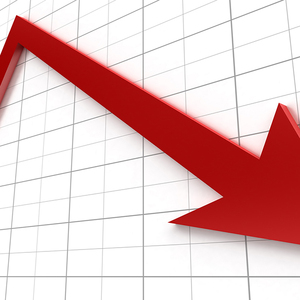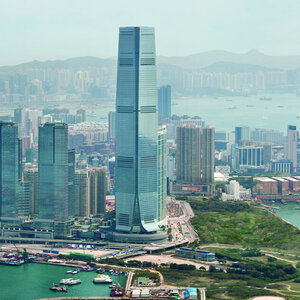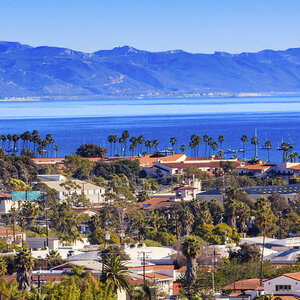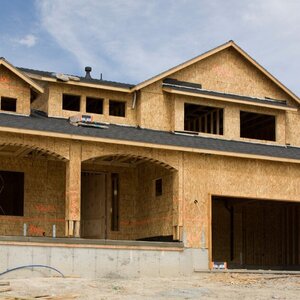The WPJ
THE WORLD PROPERTY JOURNALReal Estate Facts Not Fiction
Vacation Real Estate News
U.S. Hotel Industry Posted a 16.7% Drop in Room Revenues in 2009
Vacation News » Vacation & Leisure Real Estate Edition | By Michael Gerrity | January 28, 2010 9:06 AM ET
(HENDERSONVILLE, TN) -- According to data from Smith Travel Research, the U.S. hotel industry posted a double-digit drop in revenue per available room during 2009. The metric fell 16.7 percent to US$53.71, the largest year-end decrease of any of the three key measurements.
The industry's occupancy fell 8.7 percent to 55.1 percent for the year and average daily rate dropped 8.8 percent to US$97.51.
"Good riddance to 2009, a year which we believe will go down as the worst in the modern hotel industry," said Mark Lomanno, president at STR. "The combination of a distressed economy in conjunction with panic pricing drove RevPARs down to levels that were virtually incomprehensible just a year and a half ago. I look for a significant improvement in the key hotel performance indicators in 2010."
None of the Top 25 Markets reported increases in any of the three key metrics for year-end 2009. Three markets posted occupancy decreases of less than 5 percent: Norfolk-Virginia Beach, Virginia (-3.3 percent to 53.2 percent); Washington, D.C. (-3.2 percent to 64.9 percent); and Oahu Island, Hawaii (-2.3 percent to 73.3 percent). Houston, Texas, ended the year with the largest occupancy decrease, falling 17.0 percent to 55.8 percent because of the lingering effects of Hurricane Ike.
New Orleans, Louisiana, was the only market to post a year-end ADR decrease of less than five percent, falling 4.0 percent to US$113.52. New York, New York, reported the largest ADR decrease, falling 21.8 percent to US$215.14, followed by Phoenix, Arizona which experienced a drop of 15.4 percent to US$105.72.
Two markets posted single-digit RevPAR decreases: Norfolk-Virginia Beach (-8.5 percent to US$44.47) and Washington, D.C. (-8.5 percent to US$94.04). New York ended the year with the largest RevPAR decrease, down 26.3 percent to US$166.11, followed by Phoenix with a 25.3-percent decrease to US$55.36.
December 2009 Stats
During December 2009, the industry's occupancy fell 1.9 percent to end the month at 44.2 percent. ADR dropped 6.0 percent to finish the month at US$93.73. RevPAR for the month decreased 7.8 percent to finish at US$41.46.
"While we were encouraged by the positive demand performance the industry experienced in December, we believe this may be more the result of an easy comparison to last year and the timing of New Year's Eve," Lomanno said. "In the coming months, we hope to see similar results."
Among the Chain Scale segments, two segments ended the month with occupancy increases. The Luxury segment rose 5.0 percent to 54.6 percent, and the Upper Upscale segment was up 2.6 percent to 52.2 percent. The Upscale segment ended the month virtually flat in occupancy growth with a 0.1-percent decrease to 50.0 percent.
Among the Top 25 Markets, New Orleans led the increases in all three key metrics. The market's occupancy rose 11.0 percent to 53.4 percent, ADR increased 16.4 percent to US$120.12, and RevPAR jumped 29.2 percent to US$64.10.
Aside from New Orleans, two markets experienced occupancy increases of more than 5 percent: Oahu Island, Hawaii (+7.1 percent to 72.5 percent), and Tampa-St. Petersburg, Florida (+5.4 percent to 47.1 percent). Houston posted the only double-digit occupancy decrease, falling 21.4 percent to 44.7 percent.
New Orleans was the only market to report an ADR increase. San Francisco/San Mateo, California, posted the largest ADR decrease, falling 17.4 percent to US$117.39, followed by Houston (-13.3 percent to US$81.73), Chicago, Illinois (-13.2 percent to US$99.01), and Phoenix (-13.1 percent to US$89.35).
Norfolk-Virginia Beach ended the month flat in RevPAR growth at US$23.99. Houston reported the largest decline in RevPAR, which fell 31.8 percent to US$36.50, followed by San Francisco/San Mateo with a 22.1-percent decrease to US$69.90.
Sign Up Free | The WPJ Weekly Newsletter
Relevant real estate news.
Actionable market intelligence.
Right to your inbox every week.
Real Estate Listings Showcase
Related News Stories
Vacation Real Estate Headlines
- Asia Pacific Hotel Revenues to Rise in 2024 Despite Economic Volatility
- Tourist Bookings to Hawaii Down 50 Percent Since Maui Wildfires
- Demand for Vacation Homes in U.S. Hit 7-Year Low in August
- International Travel for Americans Jumps Over 200 Percent in 2023
- U.S. Labor Day Weekend Travel To Uptick in 2023
- Asia Pacific Hotel Investment Collapses 51 Percent in 2023
- As Summer Travel Season Winds Down, U.S. Gas Prices Rise Again
- Record Setting 50.7 Million Americans to Travel This July Fourth Holiday
- Israel Hotels Poised for Growth as International Visitors Set to Return
- Over 42 Million Americans to Travel This Memorial Holiday Weekend
- European Hotel Transactions Decline 18 Percent in 2022 as Interest Rates Surge
- U.S. Vacation Home Demand Dives 50 Percent from Pre-Pandemic Levels
- European Hotel Values Upticked 3 Percent in 2022
- U.S. Vacation Rental Bookings Rise 27 Percent Annually in January
- Third-Party Hotel Operators Set to Increase Across Europe in 2023
- 113 Million People Traveling in the U.S. During the 2022 Holiday Season
- London Hotels Set to Weather High Inflation in 2022
- Almost 55 Million People to Travel This Thanksgiving Holiday in America
- Düsseldorf Hotels Enjoy Growing Corporate Demand in 2022
- Global Hotel Investment Activity in Asia Pacific to Rise 80 Percent in 2022
- Japan Lifts Foreign Inbound Covid Travel Restrictions in October
- Demand for Second Vacation Homes in the U.S. Decline
- Amsterdam Hotels Enjoy Comeback Post Covid Travel Restrictions
- 47.9 Million Americans Will Travel This July 4th Weekend
- High Prices, Rising Rates, Economic Uncertainty Ends Vacation Home Boom in America
- My Top 3 July Fourth Vacation Getaways in America Revealed for 2022
- Post Covid, New York City Hotel Market on the Road to Recovery
- Fast Rising Gas Prices to Impede U.S. Vacation Travel in H2 of 2022
- Post-Covid, Paris Hotel Sector Set for Strong Recovery as Demand Grows
- Singapore Hotel Demand to Accelerate in Late 2022
- 39.2 Million Americans to Travel Memorial Weekend, Says AAA
- Covid Driven Vacation Home Boom in America Now Ending in 2022
- Turks and Caicos Vacation Home Sales Enjoy Record-Breaking 2021
- Asia Pacific Hotel Sector Enjoys $8.5 Billion of Investment in 2021
- London Hotels Enjoying a Flight to Quality
- Demand for Vacation Homes Up 77 Percent From Pre-Pandemic Levels
- Even With Omicron, 109 Million Americans Traveling for the Holidays in 2021
- U.S. Vacation Home Demand Still Strong in Late 2021
- Top 5 Christmas Getaways in America Revealed
- Vacation Home Markets in the U.S. Remain Strong
Reader Poll
Marketplace Links
This website uses cookies to improve user experience. By using our website you consent in accordance with our Cookie Policy. Read More





